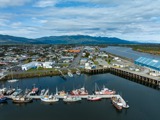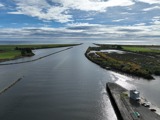Stability of fishing boats and small vessels
All vessels entering the Westport Harbour must be in stable condition. Stability is determined by the force of buoyancy provided by the underwater parts of a vessel, combined with the weight of its hull, equipment, fuel, stores and load. These forces can be adversely affected by weather conditions and sea state.
Understanding the factors that influence stability will assist skippers to make the right decisions and take the right actions to keep their vessels safe.
Skippers should be aware of all the factors that determine a vessel’s stability including:
- The free surface effect of liquids and loose fish.
- Additional weights on deck, including portable ice slurry bins and fuel containers.
- The loss of stability that occurs if deck enclosures or bins suddenly fill with water.
- Modifications to a vessel may be detrimental to its stability. The vessel’s statical stability should be calculated after any alterations.
- The movement of weights within the vessel including people.
Skippers should also be aware that:
- All bars have areas of broken water containing air, which can severely reduce the stability and handling of a vessel.
- In marginal conditions, nighttime crossings are more hazardous.
- Vessels attempting to cross a bar at or near low water are more likely to experience adverse conditions than at high water.
For more information on the importance of vessel stability in order to keep the vessel safe from capsize; and protect the lives of those on board; please refer to Maritime New Zealand.




